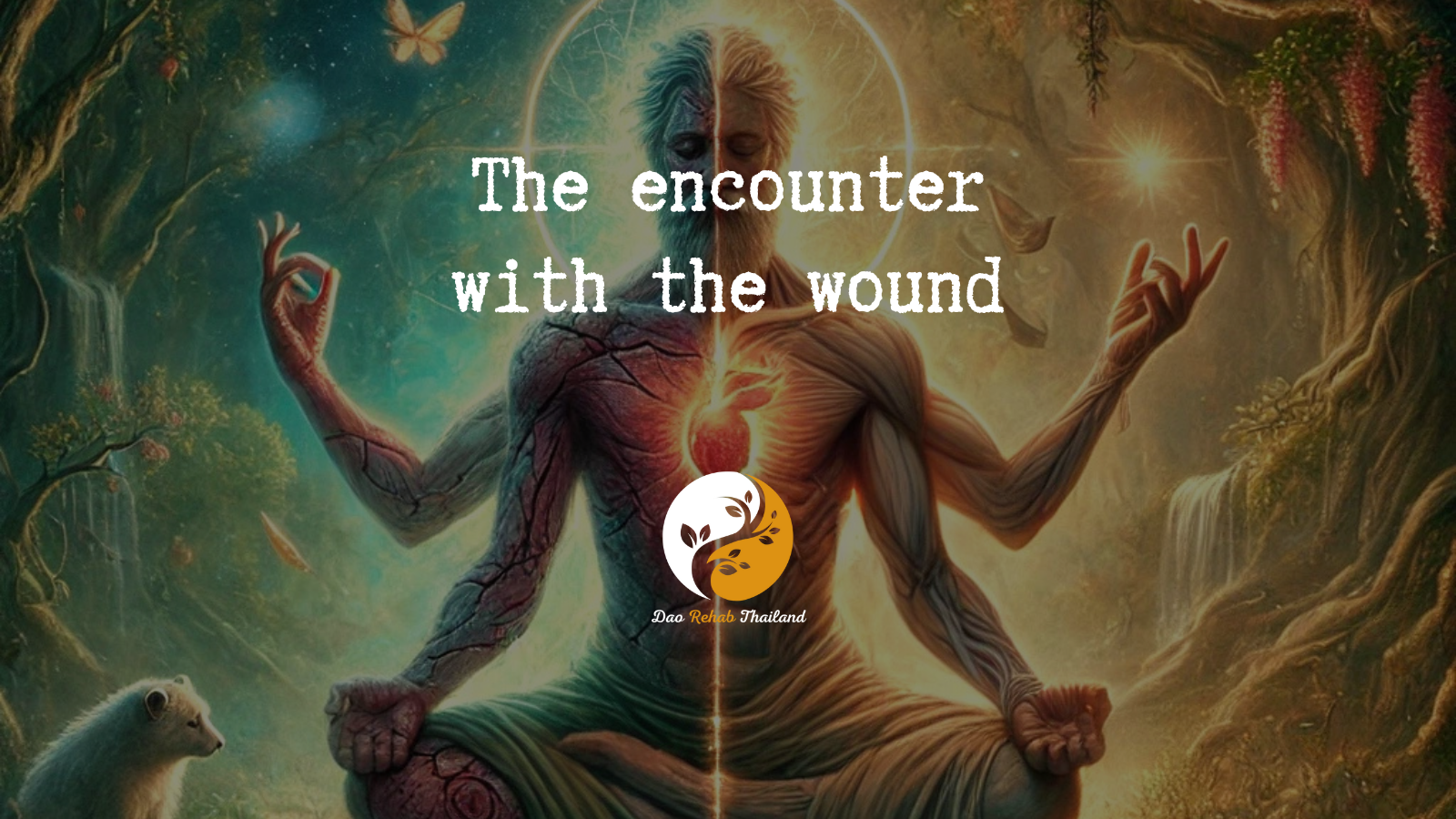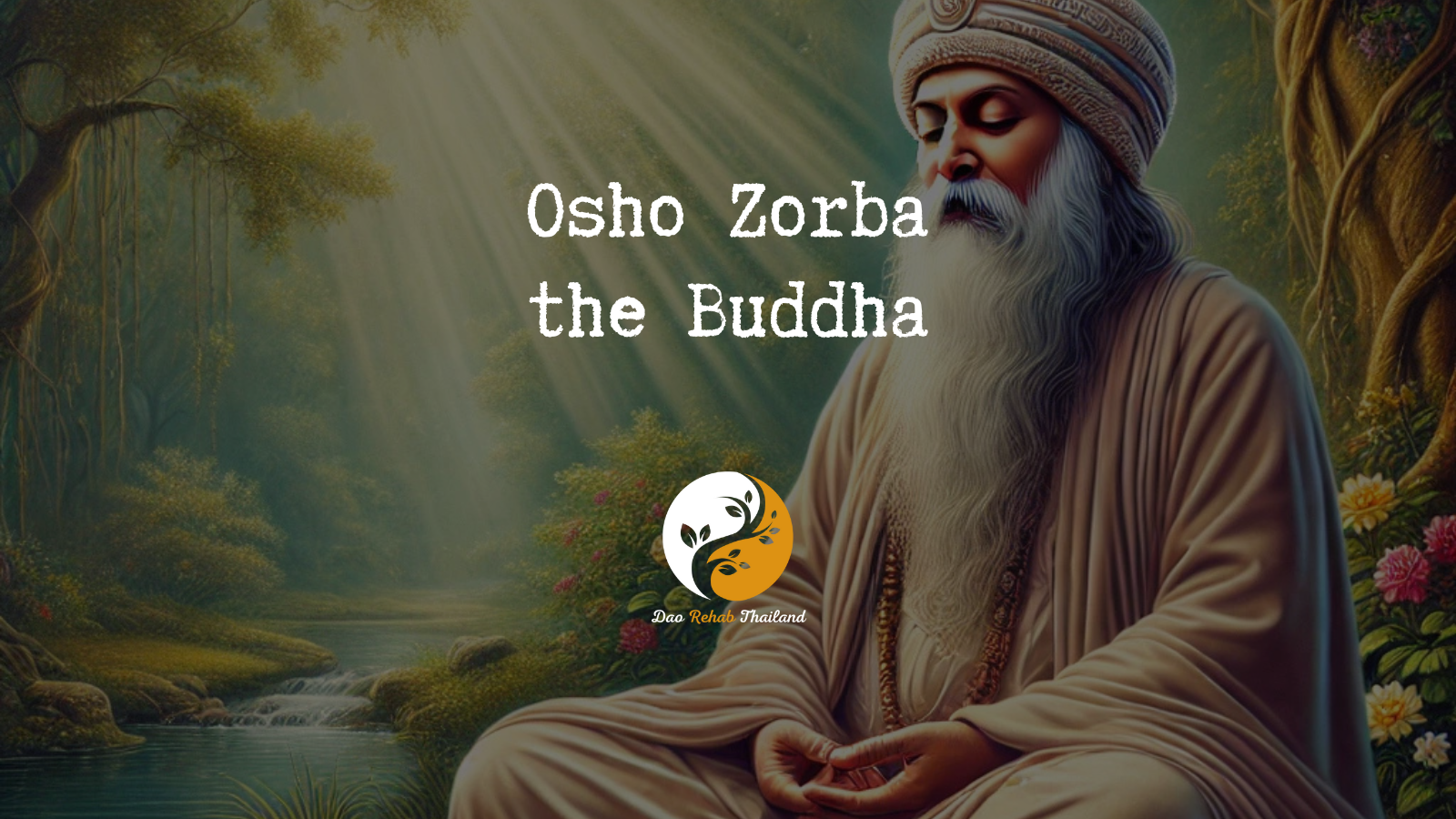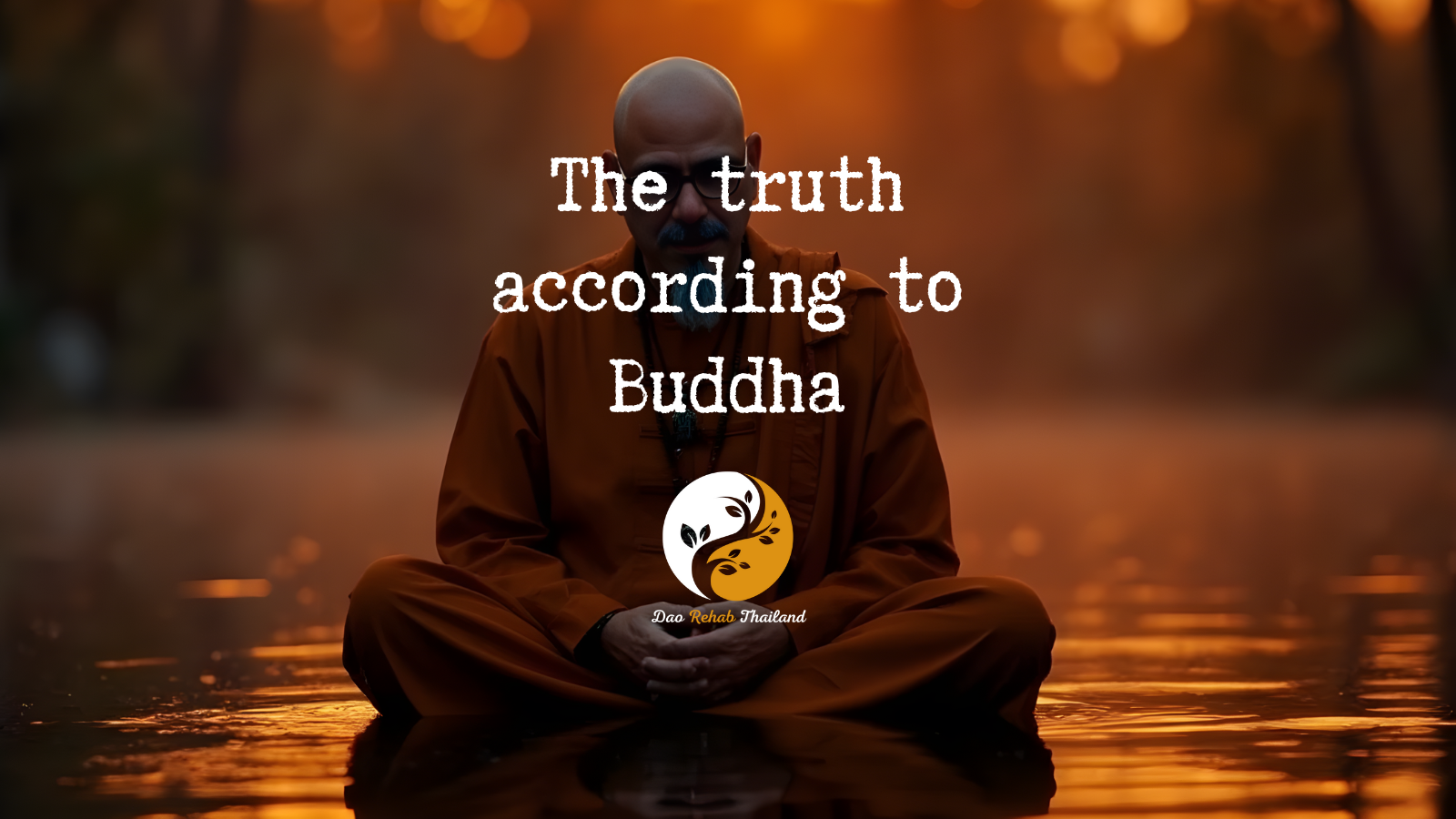
The encounter with the wound
The encounter with
the wound
“Turning the impossible into possible”

"Detox from Drugs at a Luxury Holistic Center in Thailand and Israel"

The encounter with the wound is a significant turning point in the journey.
The encounter with the wound is a significant turning point in the journey of a person’s mental development. Jungian psychology sees the wound as an opportunity for awakening, growth, and the beginning of the process of individuation – the journey of self-formation. The wound breaks the sense of wholeness and unity, reveals the shadow and unconscious contents, and invites us to deal with them. It is a gateway that allows a transition from identification with the external persona to a dialogue with the deeper self.
"Holistic Center for Trauma, Addiction, and Mental Imbalance Treatment in Thailand"
“Come to the beginning of your journey to freedom from addiction to alcohol, drugs, and pills, and rediscover your life within the serene embrace of DaoTherapy Rehab in Thailand—where holistic healing meets empowering recovery.”
DaoTherapy Holistic Rehab
Key Elements of Drugs Detox:
Medical Supervision: Drugs detox must be conducted under medical supervision, as the body may experience withdrawal symptoms. These can include nausea, anxiety, muscle aches, and insomnia. A medical team will monitor and manage these symptoms to ensure the patient’s safety and comfort.
Holistic Therapies:
Holistic Therapies: Many detox programs incorporate holistic therapies such as mindfulness, yoga, and meditation to help individuals cope with stress and anxiety during the detox process. These therapies support the mind-body connection and contribute to overall recovery.
Tapering Process
Tapering Process: Drugs detox often involves a gradual tapering of the drug to reduce withdrawal severity. Doctors will slowly decrease the dosage over time to allow the body to adjust to lower levels of the substance.
Psychological Support:
Psychological Support: Like any addiction recovery process, detox from Drugs includes psychological support. This can involve counseling, therapy, or support groups to address the mental and emotional aspects of addiction.
Post-Detox Treatment:
Post-Detox Treatment: After completing detox, continuing treatment is crucial to prevent relapse. This often includes participation in ongoing therapy, group support, and the development of new coping strategies to maintain sobriety.
The role of the wounded healer
The role of the wounded healer is a central model for understanding this process. The myths and stories of wounded healing figures, such as shamans, Chiron, Asclepius, and Orpheus, demonstrate how encountering and dealing with the wound is a necessary condition for the ability to heal others. The true healer knows how to contain and hold his own suffering and that of his patients, without denial or repression. Only through recognition of the shadow can one reach wholeness.
However, this journey is fraught with obstacles. The ego tends to inflate and identify with the persona or the wound, instead of developing a healthy relationship with the self. Sometimes there is a tendency to deny the wound or become addicted to it. Healers may also be tempted to see themselves as “savior gods,” instead of allowing the patient to find redemption within themselves.
Awareness of the transference and countertransference processes is critical to avoiding these pitfalls. The healer must recognize the projections he attributes to the patient, and understand how they relate to his own personal wounds. Without self-awareness, he may do more harm than good. On the other hand, when transference is handled correctly, it can become a deeply healing experience.
Finally, art and music serve as powerful tools in this transformative process. They allow us to bridge the gap between consciousness and the unconscious, to express the inexpressible and to give language to the archetypal experience. Through them, the healing energies inherent in the soul can be awakened.
The journey of the wounded healer is a complex but necessary challenge, combining personal coping with therapeutic transference processes. It invites both healer and patient to look inward, embrace the broken and find the whole within themselves. It is a kind of delicate dance between light and shadow, requiring skill, compassion and courage. But for those willing to dive into the depths of the soul, it is also a source of infinite growth, wisdom, and enlightenment.

contact us
Contact us with your questions
We would love to speak with you! Feel free to reach out with any questions.

get in touch
Schedule a free consultation
Schedule a free consultation with our team and let’s make things happen!
The journey of awakening through the wound
The encounter with the wound is a significant turning point in the journey of a person’s mental development. Jungian psychology sees the wound as an opportunity for awakening, growth, and the beginning of the process of individuation – the journey of self-formation. The wound breaks the sense of wholeness and unity, reveals the shadow and unconscious contents, and invites us to deal with them. It is a gateway that allows a transition from identification with the external persona to a dialogue with the deeper self. Pain and suffering become teachers, leading us to our inner truth. Instead of repressing or ignoring, we learn to listen to the voice of the wound, to respect the message it carries for us. It is an invitation to embark on a journey of self-discovery, to reconnect with the lost and hidden parts within us. Only in this way can we reach true wholeness, which stems from acceptance and integration of our entire being.
Figures of the Wounded Healer in Myths
The role of the wounded healer is a central model for understanding this process. The myths and stories about wounded healing figures, such as shamans, Chiron, Asclepius, and Orpheus, demonstrate how encountering and dealing with the wound is a necessary condition for the ability to heal others. The shaman often experiences a serious illness or spiritual crisis, which leads him on a journey to the inner worlds. He is required to confront his demons and fears, and only after he manages to overcome them does he gain the powers of healing. Chiron, the revered teacher of healing in ancient Greece, was severely wounded by a poisoned arrow and condemned to suffer forever. However, the ongoing pain taught him compassion and empathy, making him a skilled healer who could identify with the suffering of his patients. Asclepius, the god of medicine, also died from a lightning strike by Zeus, but was later elevated to the rank of a god. His death and regeneration symbolize the healer’s necessary transition through the darkness of the soul and his rebirth. The true healer knows how to contain and hold his own suffering and that of his patients, without denial or repression. He is present with everything that arises, with the understanding that only through recognizing the shadow can one reach the light. His power comes from his own vulnerability, from the places where he has been wounded and healed over and over again.
Obstacles in the Spiritual Journey
However, this journey is fraught with obstacles. The ego tends to swell and identify with the persona or the wound, instead of developing a healthy relationship with the self. Sometimes there is a tendency to deny the wound or to indulge in it, turning it into an absolute identity that defines all of existence. The person may remain stuck in the role of victim or hide behind a mask of imaginary perfection, without truly dealing with the wounds of the past. Healers may also be tempted to see themselves as “savior gods,” instead of allowing the patient to find redemption within themselves. It is important to recognize that sometimes resistance and refusal to “heal” in the conventional sense are expressions of the soul’s deep wisdom, which understands that time and space are needed to bring about real change. The challenge is to find the delicate balance between acceptance and the desire for development, between compassion for the wound and the courage to change.
The Importance of Transference and Countertransference
Awareness of the transference and countertransference processes is critical to avoiding these pitfalls. The healer must recognize the projections he attributes to the patient, and understand how they relate to his own personal wounds. The patient’s wound may touch the therapist’s unconscious wound, leading to unexpected and unwanted reactions. Without self-awareness, he may do more harm than good, imposing his wishes and needs on the patient instead of truly listening to him. On the other hand, when transference is treated correctly, it can become a deeply healing experience. The therapeutic relationship becomes a melting pot where the two wounds meet and reflect each other, until a new vision and release are possible. The intimacy and trust that are forged between two vulnerable and courageous people are the basis for personal growth and self-discovery. When the healer is able to observe himself through the eyes of the patient and contain the criticism, a new space for change opens up.
Art as a tool for transformation
Finally, art and music serve as powerful tools in this transformative process. They allow us to bridge the gap between consciousness and the unconscious, to express the inexpressible and to give language to the archetypal experience. The myth of Orpheus illustrates this well – his music had magical powers, capable of softening hearts, opening gates and bringing the dead back to life. Through sounds, words and colors, it is possible to give expression to the pain and longing that lie deep within, to dreams and hidden longings. A work of art invites a direct dialogue with the unconscious, moving beyond the barriers of logic and language. It opens the door to the emergence of symbols and archetypes, which hold the key to self-understanding. For many, engaging in art is a royal way to transform suffering into meaning and beauty, to form a new identity that contains the brokenness as an inseparable part of it. Through them, it is possible to awaken the healing energies inherent in the soul, and connect to the sources of pleasure and creativity that flow within us.
The journey of the wounded healer is a complex but necessary challenge, combining personal coping with therapeutic transference processes. It invites both the healer and the patient to look inward, embrace the brokenness, and find the whole within themselves. It is a kind of delicate dance between light and shadow, which requires skill, compassion, and courage. To walk in it, one must dedicate oneself to the process of personal development and see it as a fascinating adventure of discovery, rather than a problem that requires a quick solution. The goal is not to get rid of the wound or to control it, but to learn to live with it peacefully, with acceptance and curiosity. In this way, the crisis can become a lever for growth and self-fulfillment. But for those who are willing to dive into the depths of the soul and face the mirror, it is also a source of infinite growth, wisdom, and enlightenment. The wound becomes a gift, connecting us to the common human essence and offering a path to transcend suffering. The insights of the journey go far beyond personal well-being – they touch on the fundamental questions of existence and illuminate the path for many others.
Central insights
1. The wound often initiates a journey of healing and development.
2. To heal others, we must first heal ourselves.
3. Dialogue with the unconscious is key to mental health.
4. Original wholeness with the self leads to ego inflation and swelling.
5. Our projections onto others often reflect our wounds.
6. Music is a symbol of the healing nominative energy.
7. To be an effective healer, we must acknowledge our own and our patients’ wounds.
8. The process of individuation is the structure of psychological development.
9. The ego and the self must engage in dialogue in order to achieve mental health.
10. Dealing with transference is a central challenge in the therapist-patient relationship.
practical advice:
1. Take time to recognize your own shadows and wounds so that you can help others more effectively.
2. Be aware of the phenomenon of transference in the therapeutic relationship and address it with awareness.
3. Cultivate an internal dialogue between the ego and the deeper self.
4. Be aware of the tendency to over-identify with the wounds or with the role of the healer.
5. Use music and other arts as tools to bridge the gap between the conscious and the unconscious.
6. Remember that the ultimate goal is to empower the client to find healing within themselves.
Psychological Support:
Psychological Support: Like any addiction recovery process, detox from Subutex includes psychological support. This can involve counseling, therapy, or support groups to address the mental and emotional aspects of addiction.
self-talk mantras:
1. Instead of: “I am unable to help others,” say: “I have the ability to heal myself and to help others heal.”
2. Instead of: “I am afraid of my wounds,” say: “I am learning to embrace my wounds as a way to grow.”
3. Instead of: “I am not worthy of happiness,” say: “I discover happiness in me and within myself through spiritual growth.”
4. Instead of: “The inner world scares me,” say: “I dive inward with curiosity and courage.”
5. Instead of: “I must stay strong all the time,” say: “I have the strength to deal with my vulnerabilities.”
Thought provoking questions:
1. Start a dream journal and write down the dreams that come to you at night. Look for patterns and recurring symbols.
2. Every day, take a few minutes to sit quietly with yourself and listen to your inner voices. What feelings and emotions arise?
3. When you encounter a person who evokes a strong emotional response in you, ask yourself: What about them resonates with something inside you? Try to understand the projection.
4. Explore a creative field that interests you – painting, writing, dancing, playing music – and let your hands play freely. Then observe what is created.
5. Tell a close friend or family member about an emotional wound you have gone through. Talk about it openly and accept what comes up with compassion.








